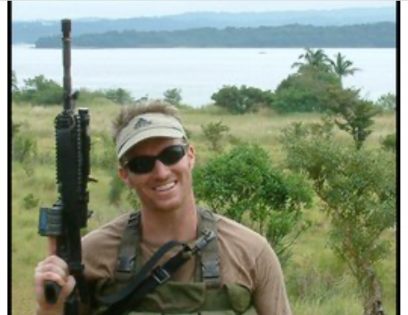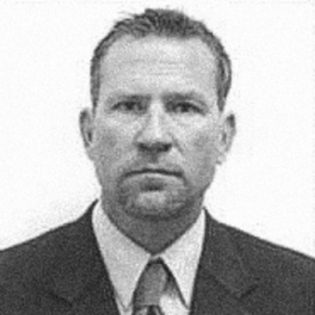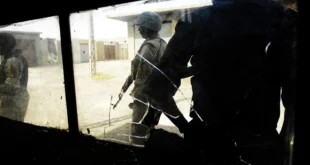Video: 13 Hours: The Secret Soldiers of Benghazi. The dead are gone, the masterminds report they are alive and well after Hillary tested positive, making her another poster child for Vaccinations.
Benghazi terror attack and the crash of the SEAL Team 6 Helicopter has come back to haunt Biden, Again and Again.
“We weren’t told they wanted more security. We did not know they wanted more security there,” Biden said.
In fact, two security officials who worked for the State Department in Libya at the time testified that they repeatedly requested more security and two State Department officials admitted they had denied those requests. State Department official Charlene Lamb was named as the person most directly responsible for rejecting multiple requests according to the Foreign Policy testimonial reports.
6 January: The former chief of U.S. Capitol Police Steven Sund said that security officials at the House and Senate rebuffed his early requests to call in the National Guard ahead of a demonstration in support of President Trump that turned into a deadly attack on Congress, NPR

Glen A. Doherty, a CIA contract protective officer, lost his life in the service of his country while trying to protect a CIA facility in Benghazi, Libya, early on the morning of September 12, 2012. He was killed alongside his friend and fellow officer Tyrone Woods.

Early Years:
Glen was a highly decorated SEAL, a warrior and a medical corpsman: He was a nine-year veteran with combat experience in Iraq and Afghanistan. He came to the Navy and later to CIA to fulfill his sense of adventure and his need for service.
His Final Mission:
Glen took his passion for adventure and for taking care of others into CIA service as a protective officer beginning in 2005. He deployed fourteen times with CIA.
When the State Department’s mission facility in Benghazi was attacked on September 11, 2012, Glen was part of a CIA team that mobilized to try to rescue the staff there, including Ambassador Christopher Stevens. When the group discovered that the Ambassador was missing, it decided to deploy to the CIA base in Benghazi instead to help reinforce that position and evacuate mission staff.
When Glen’s team arrived, CIA officers in Benghazi had already taken up defensive positions, as the Base was under attack by small arms and machine gun fire as well as from rocket-propelled grenades and hand-thrown bombs.
On the morning of September 12, the CIA Base was subjected to repeated mortar fire. Learning that his friend, fellow CIA officer and fellow former SEAL Tyrone Woods, was manning a defensive position on the roof, Glen without hesitation went to help him. These were the kind of men who ran towards danger.
Defending the compound from the rooftop, Glen died alongside his friend when a mortar round landed near them.
Glen Doherty was 42 years old.

Tyrone S. Woods, a CIA contract protective officer, lost his life in the service of his country while trying to protect a CIA facility in Benghazi, Libya, early on the morning of September 12, 2012. He was killed alongside his friend and fellow officer, Glen Doherty.

Early Years:
A native of Oregon, a wrestler in high school, and a lover of adventure, Tyrone joined the Navy at 18 years old and became a SEAL because that was the biggest challenge he could think of.
He had a legendary career as a SEAL, rising to the rank of Senior Chief Petty Officer, serving several decorated combat tours in Iraq and Afghanistan, and receiving many awards.
He was also a registered nurse and paramedic: He was said to have “the hands of a healer and the arms of a warrior.”
His Final Mission:
When the State Department’s mission facility in Benghazi was attacked on September 11, 2012, Tyrone was part of the CIA team that responded, driving to a point near the State Department facility, which was under fire, fighting their way inside, and trying in vain to locate Ambassador Stevens in the deteriorating conditions.
After many futile attempts to locate the Ambassador in the smoke and flames, and while still under fire, the team evacuated personnel at the facility, saving the lives of 30 Americans, and made their way back to the CIA Base.
After treating a State Department security officer for a wound, Tyrone and other CIA and security officers took up defensive positions, as the Base was under attack by small arms and machine gun fire as well as from rocket-propelled grenades and hand-thrown bombs.
Tyrone helped repel two concerted attacks.
On the morning of September 12, however, the CIA Base was subjected to repeated mortar fire.
Tyrone and fellow officer Glen Doherty were the kind of men who ran towards danger. Defending the Base from the rooftop, they died when a mortar round landed near them.
Tyrone was 41 years old.
The Benghazi Attacks
The attacks in Benghazi occurred at two different locations: a Department of State “Temporary Mission Facility” and an Annex facility (“Annex”) approximately a mile away used by another agency of the United States Government. On September 11 , Ambassador Stevens was in Benghazi, accompanied by two Diplomatic Security (DS) agents who had traveled there with him. Also present were three other DS agents and a Foreign Service Officer, Sean Smith, who were posted at the Temporary Mission Facility (“facility” or “compound”). There were also three members of the February 17 Brigade, a Libyan militia deputized by the Libyan government but not under its direct control, and four unarmed local contract guards protecting the compound.
During the day on September 11 , the Ambassador held several meetings on the compound and retired to his room at approximately 9:00 p.m. local time. About 40 minutes later, several agents and guards heard loud shouting, noises coming from the gate, as well as gunfire, and an explosion. A closed-circuit television monitor at the facility’s Tactical Operations Center (“TOC”) showed a large number of armed people flowing unimpeded through the main gate. One of the DS agents in the compound’s TOC triggered an audible alarm, and immediately alerted the U.S. Embassy in Tripoli and DS headquarters in Washington. These notifications were quickly transmitted from the Department of State to the Department of Defense. DS headquarters maintained open phone lines with the DS personnel throughout the attack. That same DS agent also called the Annex to request assistance from security personnel there, who immediately began to prepare to aid the U.S. personnel at the diplomatic facility.
When the attack commenced, four DS agents and Foreign Service Officer Smith were in or just outside the same building where the Ambassador was spending that night. A fifth DS agent was in the TOC when the terrorist attack began. Ambassador Stevens, Smith, and one DS agent sought shelter in the building’s safe haven, a fortified area designed to keep intruders out, while the other three agents went to retrieve additional weapons and tactical gear such as body armor, helmets, and ammunition. After retrieving their gear, at least two of the DS agents sought to return to the building where the Ambassador was. On the way back, however, the DS agents encountered attackers. The lone DS agent with the Ambassador reported via radio that he was secure within the safe haven, allowing the two agents who had left in search of weapons to seek refuge in the same building where they had armed themselves. The third DS agent who had gone to the TOC to retrieve his gear, stayed there with the DS agent who had been manning the TOC since the beginning of the attack.
The attackers started to set several of the compound’s structures on fire, using diesel fuel found on site, and groups of attackers tried to enter several buildings on the compound. The attackers did not succeed in entering the TOC, but did succeed in entering the building where Ambassador Stevens was staying and the building where the two DS agents were seeking refuge. No safe havens were breached during the initial assault. The attackers spread the diesel fuel throughout the building where the Ambassador was hiding, and ignited it, causing the building to fill with smoke.
When the smoke became so thick that breathing was difficult, the DS agent attempted to lead the Ambassador and Smith to escape through a nearby window. The agent opened the window to make sure it was safe to leave, and stepped out but then realized he had become separated from the Ambassador and Smith. The agent radioed the TOC, requesting assistance and returned numerous times to the building to look for the Ambassador and Smith. When the other agents arrived, they also took turns entering and searching the building. Though they were able to find and remove Smith’s body, they were unable to find Ambassador Stevens.
After being notified about the attack, Annex personnel had attempted to contact the February 17 Brigade, other militias, and the Libyan government to ask for assistance. After gathering necessary weapons and gear, at approximately 10:04 p.m., six security personnel and a translator left the Annex en route to the facility. Prior to reaching the facility, they again attempted to contact and enlist assistance from the February 17 Brigade, other militias, and the Libyan government. By 10:25 p.m., the security personnel from the Annex had entered the compound and engaged in a 15-minute firefight with the armed invaders. The team reached the Ambassador’s building at 10:40 p.m. but was unable to find him due to the intense fire and smoke.
At 11:15 p.m., the Annex security personnel sent the DS agents (who were all suffering from smoke inhalation from their continuous search for Ambassador Stevens and Smith) to the Annex, and followed there later, both groups taking fire while en route. By this time, an unmanned, unarmed surveillance aircraft began circling over the Benghazi compound, having been diverted by the Department of Defense from its previous surveillance assignment over another location. Soon after the Americans returned to the Annex, just before midnight, they were attacked by rocket-propelled grenade (RPG) and small arms fire. The sporadic attacks stopped at approximately 1:01 a.m.
U.S. government security personnel who were based in Tripoli had deployed to Benghazi by chartered aircraft after receiving word of the attack, arriving at the Benghazi airport at 1:15 a.m. They were held at the airport for at least three hours while they negotiated with Libyan authorities about logistics. The exact cause of this hours-long delay, and its relationship to the rescue effort, remains unclear and merits further inquiry. Was it simply the result of a difficult Libyan bureaucracy and a chaotic environment or was it part of a plot to keep American help from reaching the Americans under siege in Benghazi?
The team from Tripoli finally cleared the airport and arrived at the Annex at approximately 5:04 a.m., about ten minutes before a new assault by the terrorist began, involving mortar rounds fired at the Annex. The attack concluded at approximately 5:26 a.m., leaving Annex security team members Tyrone Woods and Glen Doherty dead and two others wounded. The decision was then made to leave the Annex. Libyan forces, not militia, arrived around 6:00 a.m. with 50 vehicles and escorted the Americans to the airport. Two planes carrying all remaining U.S. personnel then left Benghazi. The first flight departed between 7:00 a.m. and 7:40 a.m. (agency timelines vary on this point) and the second at 10:00 a.m.
American government officials outside of Benghazi learned of the attack shortly after it started at 3:40 p.m. EST (9:40 p.m. Benghazi time). DS agents, in addition to notifying personnel at the Annex, immediately alerted officials at the U.S Embassy in Tripoli and the Department of State Headquarters in Washington, D.C. As noted earlier, the U.S. Africa Command (AFRICOM) at the Department of Defense (DOD) directed an unarmed surveillance aircraft to the skies over the Benghazi compound at 3:59 p.m. EST. It arrived there at 5:10 p.m. EST (11:10 p.m. Benghazi time). At 4:32 p.m., the National Military Command Center in the Pentagon alerted the Office of the Secretary of Defense and the Joint Staff, and the information was shared with Secretary of Defense Leon Panetta and Chairman of the Joint Chiefs of Staff, General Martin Dempsey. Secretary Panetta and General Dempsey were at the White House for a previously scheduled meeting at 5:00 p.m. and so were able to brief the President on the developments in Benghazi as they were occurring.
From 6:00 to 8:00 p.m. EST, Secretary Panetta met with senior DOD officials to discuss the Benghazi attack and other violence in the region in reaction to the anti-Muslim video. The Secretary directed three actions: 1) that one Fleet Antiterrorism Security Team (FAST) platoon stationed in Rota, Spain, deploy to Benghazi and that a second FAST platoon in Rota prepare to deploy to Tripoli; 2) that U.S. European Command’s In-extremis Force, which happened to be training in central Europe, deploy to a staging base in southern Europe; and 3) that a special operations force based in the United States deploy to a staging base in southern Europe. The National Command Center transmitted formal authorization for these actions at 8:39 p.m. A FAST platoon arrived in Tripoli the evening (local time) of September 12th, and the other forces arrived that evening at a staging base in Italy, long after the terrorist attack on the U.S. facilities in Benghazi had ended and four Americans had been killed. From the U.S. Senate
The Benghazi Committee has the long drawn out investigation results attempting to debunk all the myths and lies, but the full truth may never be known.

The Ben Ghazi SEAL Team 6 Connection.
NEXT PART II SEAL Team 6 deaths????? We will update if anything comes of this.
 Soldier of Fortune Magazine The Journal of Professional Adventurers
Soldier of Fortune Magazine The Journal of Professional Adventurers





